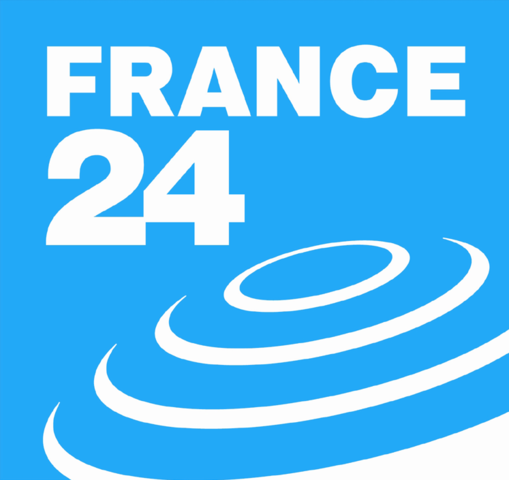Minnesota Governor Tim Walz called in the National Guard on Thursday as looting broke out in St. Paul and a wounded Minneapolis braced for more violence after rioting over the death of George Floyd, a handcuffed black man in police custody, reduced parts of one neighborhood to a smoking shambles.
Advertising
Read more
The Minneapolis unrest ravaged several blocks in the Longfellow neighborhood, with scattered rioting reaching for miles across the city. It was the second consecutive night of violent protests following Floyd's death, which was seen in a video that showed him gasping for breath while an officer kneeled on his neck for almost eight minutes. In footage recorded by a bystander, Floyd pleads that he cannot breathe until he slowly stops talking and moving.
Another protest was announced for Thursday evening near county offices in downtown Minneapolis. Some stores in Minneapolis and the suburbs closed early, fearing more strife. The city shut down its light-rail system and all bus service out of safety concerns.
Around midday Thursday, the violence spread a few miles away to a Target in St. Paul's Midway neighborhood, where police said 50 to 60 people rushed the store attempting to loot it. Police and state patrol squad cars later blocked the entrance, but the looting then shifted to shops along nearby University Avenue, one of St. Pauls main commercial corridors, and other spots in the city.
St. Paul spokesman Steve Linders said authorities were dealing with unrest in roughly 20 different areas.
“Please stay home. Please do not come here to protest. Please keep the focus on George Floyd, on advancing our movement and on preventing this from ever happening again. We can all be in that fight together,” St. Paul Mayor Melvin Carter tweeted.
Erika Atson, 20, was among several hundred people who gathered for the planned demonstration outside government offices in downtown Minneapolis, where organizers called for peaceful protest.
Atson, who is black, described seeing her 14- and 11-year-old brothers tackled by Minneapolis police years ago because officers mistakenly presumed the boys had guns. She said she had been at “every single protest” since Floyds death and that she worried about raising children who would be vulnerable in police encounters.
“We dont want to be here fighting against anyone. We dont want anyone to be hurt. We dont want to cause any damages,” she said. “We just want the police officer to be held accountable for his actions.”
The governors order did not say how many Guard members were mobilized and whether they would be in service Thursday night. After calling in the Guard, Walz urged widespread changes in the wake of Floyd's death.
"It is time to rebuild. Rebuild the city, rebuild our justice system and rebuild the relationship between law enforcement and those theyre charged to protect. George Floyds death should lead to justice and systemic change, not more death and destruction,” Walz said.
By Thursday morning in Minneapolis, smoke rose from smoldering buildings in the Longfellow neighborhood. In a strip mall across the street from the police's 3rd Precinct station, the focus of the protests on both nights, the windows in nearly every business had been smashed, from the large Target department store at one end to the Planet Fitness gym at the other. Only the 24-hour laundromat appeared to have escaped unscathed.
“WHY US?” demanded a large expanse of red graffiti scrawled on the wall of the Target. A Wendys restaurant across the street was charred almost beyond recognition.
Among the casualties of the overnight fires: a six-story rental building under construction that was to provide nearly 200 apartments of affordable housing.
“Were burning our own neighborhood,” said a distraught Deona Brown, a 24-year-old woman standing with a friend outside the precinct station, where a small group of protesters were shouting at a dozen or so stone-faced police officers in riot gear. “This is where we live, where we shop, and they destroyed it.”
“What that cop did was wrong, but Im scared now,” Brown said.
Others in the crowd saw something different in the wreckage.
Protesters destroyed property "because the system is broken,” said a young man who identified himself only by his nickname, Cash, and who said he had been in the streets during the violence. He dismissed the idea that the destruction would hurt residents of the largely black neighborhood.
“Theyre making money off of us,” he said angrily of the owners of the destroyed stores. He laughed when asked if he had joined in the looting or violence. “I didnt break anything.”
The protests that began Wednesday night and extended into Thursday were more violent than Tuesday's, which included skirmishes between offices and protesters but no widespread property damage or looting.
Mayor Jacob Frey appealed for calm. “Please, Minneapolis, we cannot let tragedy beget more tragedy,” he said on Twitter.
The citys response to the protests was being questioned even as things started spiraling Wednesday night into violence. “If the strategy was to keep residents safe — it failed,” City Council Member Jeremiah Ellison, who is black, tweeted. “Prevent Read More – Source
[contf] [contfnew] 
france24
[contfnewc] [contfnewc]





